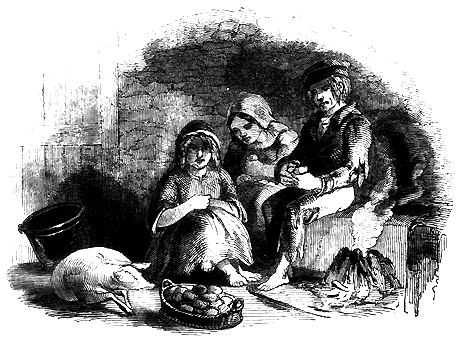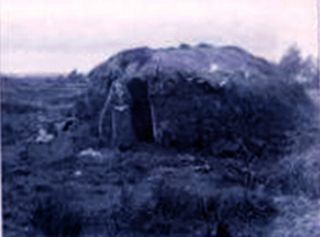Fat Cattle and Mud Cabins in Pre Famine Meath
Fat Cattle and Mud Cabins in Pre Famine Meath
Peter Connell
The considerable wealth generated by pre-Famine agricultural boom was kept firmly within the business and landlord class, leaving the barely subsisting and vast majority of Meath’s population utterly vulnerable when the potato famine came, lecturer, Peter Connell said when he addressed the county’s Archaelogical and Historical Society on “Fat Cattle and Mud Cabins” in Navan. Mr. Connell outlined the economic background to the doubling of Meath’s population, from 90,000 to 180,000 in the 60 years before the Famine and its subsequent collapse back to 90,000 by the 1800s.
The booming Napoleonic Wars demand for agricultural produce had resulted in landlords repossessing land for pasture. He instanced the farmer, Garnett, who took 480 acres from the Conyngham estate, Slane, in 1801. Garnett turned it around into a substantially profitable enterprise within two years, yet Garnett referred to the majority labouring population as “miscreants, cunning and watchful” and “all thieves”, whose miseries were self inflicted.
The available economic records, noted Mr. Connell, showed that one third of Meath’s population in 1851 lived in mud cabins – one roomed windowless and chimneyless excavations. The highest rates were in the north of the county, where labouring living standards were lower than north Cavan’s.
Cruicetown had 83 per cent of its people living in such cabins and Loughbracken, Ardbracken and Mitchelstown had the next highest percentages. Even in Navan, where there was a boom in milling, brewing and other enterprises, almost two thirds of its people lived in the equivalent of mud cabins.

This was very much worse than the levels in Mullingar (just one third), and Naas (just 16 per cent). Kells (24 per cent) and Trim just (12 per cent) had very much better housing.
A major loss of income for the agricultural labouring class was the collapse in demand for poor quality spinning flax. This supplement to subsisting families had virtually disappeared by the mid-1800s to judge from Drogheda market returns.
English cotton imports was the major cause.
Halls’ 1844 account of Navan referred to a town which was “was absolutely squalid....starvation stalks at noonday through the streets”.
Labourers were generally without full-time employment – only 10 per cent of Navan’s labourers met that definition. Agricultural labourers faced an increasingly tenuous hold onto their leases from the 1820s with the switch to pastures, said Mr. Connell. Short leases were withdrawn by landlords.
Population changes between 1820 and 1840 showed clearances from several townlands around Navan, even as evicted families crowded into neighbouring ones areas: some showed 40% population rise.
These three generations of mud cabin inhabitants were “lost generations”, said the lecturer. Their cabins and potato plots were gone and little written history about them survived. There were more surviving drawings of fat cattle than either mud cabins or their inhabitants. They had now to be fully considered to complete the history of Meath. He illustrated his point with a photo of a surviving mud cabin taken on Ardee bog in the very early 1900's.

Mud Cabin Home, Ardee Bog, early 1900s
See also: The Great Hunger and The Workhouse Solution